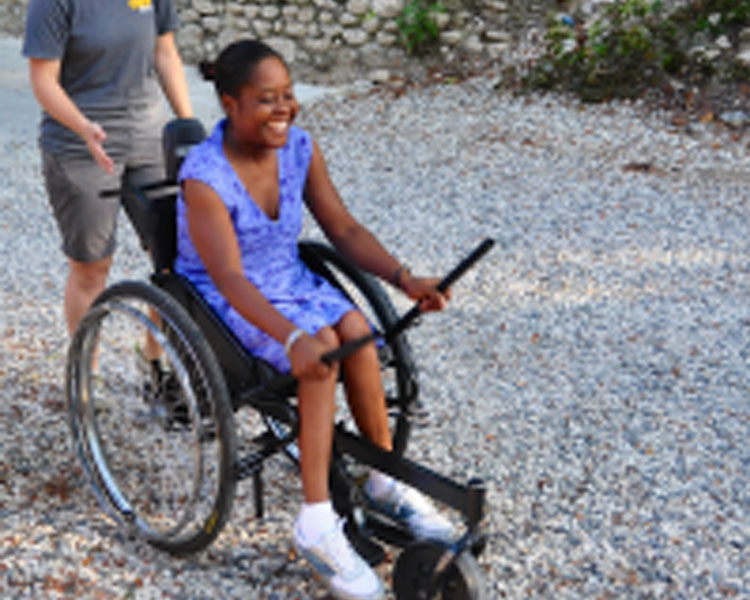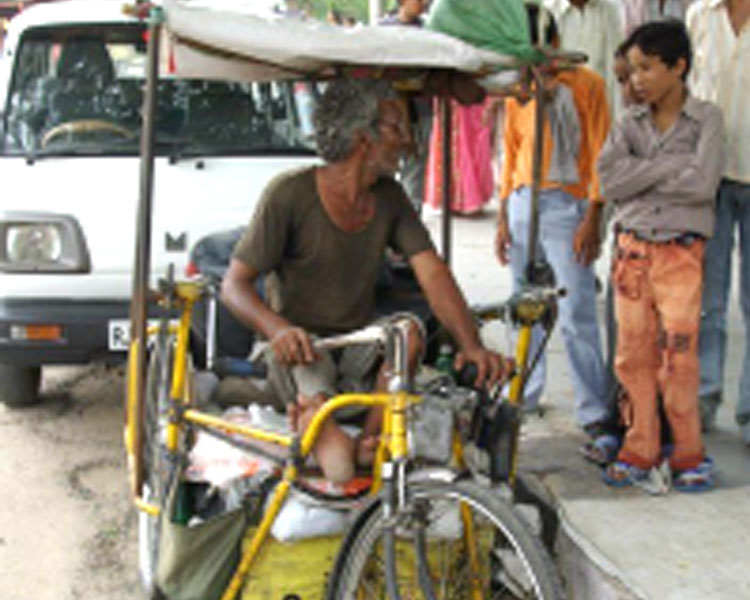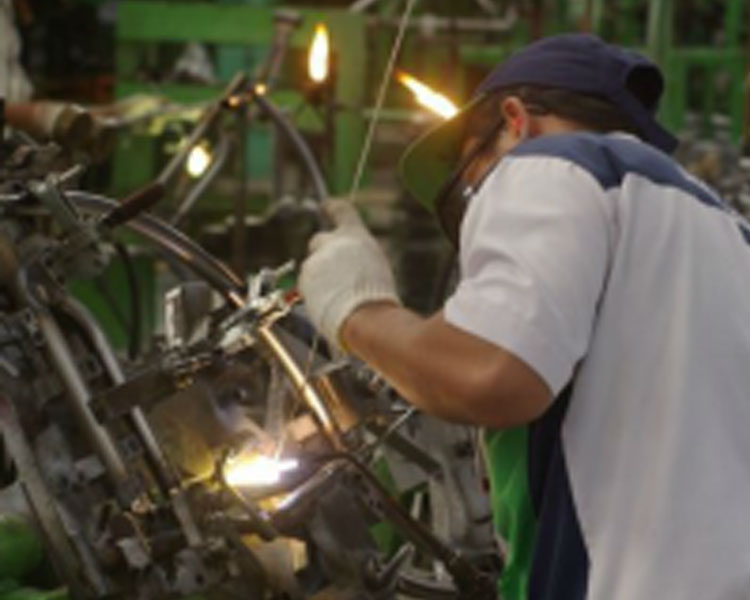
Back to the classroom after 17 years in the field
17 years ago an undergraduate student project first introduced me to the design issues embodied in wheelchairs, and I’ve spent most of my professional life since designing wheeled mobility devices of one kind or another around the globe. I’m very much looking forward to teaching D-Lab: Mobility for the first time this fall. and so I wanted to take a moment to write about a few of the key aspects of this classHere’s the short version: We’ll be getting dirty riding wheelchairs on rough ground and making noise and sparks in the welding shop, while contributing to the research and development of a product used all day, every day by tens of millions of people in the developing world. Please read on for a more details, starting with the words in the title: D-Lab Mobility: Wheelchair Design for Developing Countries
Mobility
For the approximately one percent of the human population with a significant mobility impairment, the basic ability to move according to your own will and under your own power cannot be taken for granted. And thus, for something on the order of 70 million people, technology for mobility becomes a basic need, as primary as access to adequate food, clean water, and basic healthcare.
Wheelchair
The word captures the primary functions of a mobility device: wheels and a chair, a means of transportation but also a means of supporting posture, both a vehicle and an orthosis. Like all human-powered vehicles, wheelchair design must resolve mechanical engineering, biomechanic, and ergonomic issues. But good wheelchair design must also address the social needs of the people who will use their wheelchairs in every aspect of their personal, work, and social lives, and will depend on their chair to be integrated members of their communities.
Design
D-Lab: Mobility is first and foremost a design class. We will be very heavily shop-focused. Zero prior experience is required, but students should expect to spend a lot of time developing the skills associated with rapidly creating rugged, user-testable prototypes. We'll briefly review the general design process, but our focus will be on creating hardware that a real user can use and abuseso as to provide us with trustworthy, actionable feedback on our design. . In particular, we will focus on skills related to steel fabrication -- cutting bending and welding thin gauge steel sheet and tube -- and techniques for rapidly realizing ideas in steel.
Expect to get dirty in class, and to finish the semester ready to reach for a MIG and angle grinder when many designers would use an x-acto knife and glue gun. Expect to do exploratory design work, which has a chance to contribute to global efforts to improve the state of wheelchair technology.
Developing Countries
While we will discuss the challenges common to wheelchair riders globally, we will place special focus on the history and state of the art of wheelchairs in developing countries. Developing countries represent both a challenging physical environment in which to use wheelchairs, and push us to create high-performance mobility technology. Wheelchairs also provide a case study in the challenge of distributing, using, and maintaining technology in very low-resourced environments, and the challenges inherent when the user of the technology is not empowered to directly make the purchasing decision.
Quick bio note: I taught D-Lab Design this past spring, my first foray into teaching after 17 years working as a designer of wheelchairs and similar devices. In addition to working to design, manufacture, and distribute low-cost wheelchairs for the developing world, principally for nonprofits Whirlwind Wheelchair and Handicap International, I spent several years working on the IBOT, a self-balancing, stair-climbing powered mobility device soon to be re-launched by engineer/entrepreneur Dean Kamen. I am currently working with MIT mechanical engineering professor Amos Winter, who started this class in 2009, to bring to campus some of the wheelchair riders who have inspired us both to work in this field. Among those who will visit the class, is Ralf Hotchkiss, founder of Whirlwind Wheelchair, MacArthur fellow and pioneer in the field. Interaction with local and international wheelchair riders, and direct experience riding wheelchairs, will inform our learning experience. I am working now within D-Lab to develop opportunities for student travel over MIT’s January Independent Activities Period.
Seventeen years ago, an undergraduate student project first introduced me to the design issues embodied in wheelchairs, and I’ve spent most of my professional life since designing wheeled mobility devices of one kind or another around the globe. I’m very much looking forward to teaching D-Lab: Mobility for the first time this fall, and so I wanted to take a moment to write about a few of the key aspects of this class.
Here's the short version: We’ll be getting dirty riding wheelchairs on rough ground and making noise and sparks in the welding shop, while contributing to the research and development of a product used all day, every day by tens of millions of people in the developing world. The full title of the course is D-Lab: Mobility Wheelchair Design in Developing Countries (EC.721). Please read on to hear a bit more about what the words in this course title mean to me, and some additional details about the class and my background.
Mobility
For the approximately one percent of the human population with a significant mobility impairment, the basic ability to move according to your own will and under your own power cannot be taken for granted. And thus, for something on the order of 70 million people, technology for mobility becomes a basic need, as primary as access to adequate food, clean water, and basic healthcare.
Wheelchairs
The word "wheelchair" captures the primary functions of a mobility device: wheels and a chair, a means of transportation but also a means of supporting posture, both a vehicle and an orthosis. Like all human-powered vehicles, wheelchair design must resolve mechanical engineering, biomechanic, and ergonomic issues. But good wheelchair design must also address the social needs of the people who will use their wheelchairs in every aspect of their personal, work, and social lives, and will depend on their chair to be integrated members of their communities.
Design
D-Lab: Mobility is first and foremost a design class. We will be very heavily shop-focused. Zero prior experience is required, but students should expect to spend a lot of time developing the skills associated with rapidly creating rugged, user-testable prototypes.
We'll briefly review the general design process, but our focus will be on creating hardware that a real user can use and abuse and then provide us with trustworthy, actionable feedback on our design. In particular, we will focus on skills related to steel fabrication -- cutting bending and welding thin gauge steel sheet and tube -- and techniques for rapidly realizing ideas in steel.
Students should expect to get dirty in class, and to finish the semester ready to reach for a MIG and angle grinder when many designers would use an x-acto knife and glue gun. Expect to do exploratory design work, which has a chance to contribute to global efforts to improve the state of wheelchair technology!
Developing Countries
While we will discuss the challenges common to wheelchair riders globally, we will place special focus on the history and state of the art of wheelchairs in developing countries. Developing countries represent both a challenging physical environment in which to use wheelchairs, and push us to create high-performance mobility technology. Wheelchairs also provide a case study in the challenge of distributing, using, and maintaining technology in very low-resourced environments, and the challenges inherent when the user of the technology is not empowered to directly make the purchasing decision.
Bringing inspiring wheelchair riders to the class
I am currently working with MIT mechanical engineering professor Amos Winter, who started this class in 2009, to bring to campus some of the wheelchair riders who have inspired us both to work in this field. Among those who will visit the class, is Ralf Hotchkiss, founder of Whirlwind Wheelchair, MacArthur fellow and pioneer in the field. Interaction with local and international wheelchair riders, and direct experience riding wheelchairs, will inform our learning experience. I am working now within D-Lab to develop opportunities for student travel over MIT’s January Independent Activities Period.
About me
I taught D-Lab: Design this past spring, my first foray into teaching after 17 years working as a designer of wheelchairs and similar devices. In addition to working to design, manufacture, and distribute low-cost wheelchairs for the developing world, principally for nonprofits Whirlwind Wheelchair andHandicap International, I spent seven years in the private sector and had the opportunity to work on the IBOT, a self-balancing, stair-climbing powered mobility device soon to be re-launched by engineer/entrepreneur Dean Kamen.






